When it comes to age-old hairstyles that have stood the test of time, Viking braids are a cut above the rest. But what makes these braids so iconic, and why do they continue to inspire us today?
Table of Contents:
- Journey Back in Time: The Origins of Viking Braids
- The Symbolism Tangled Within
- From Battlefields to Beauty Salons: The Modern Take
- DIY: Creating Your Own Viking Braid Masterpiece
- Care Tips for Your Braided Crown
- Conclusion
1. Journey Back in Time: The Origins of Viking Braids
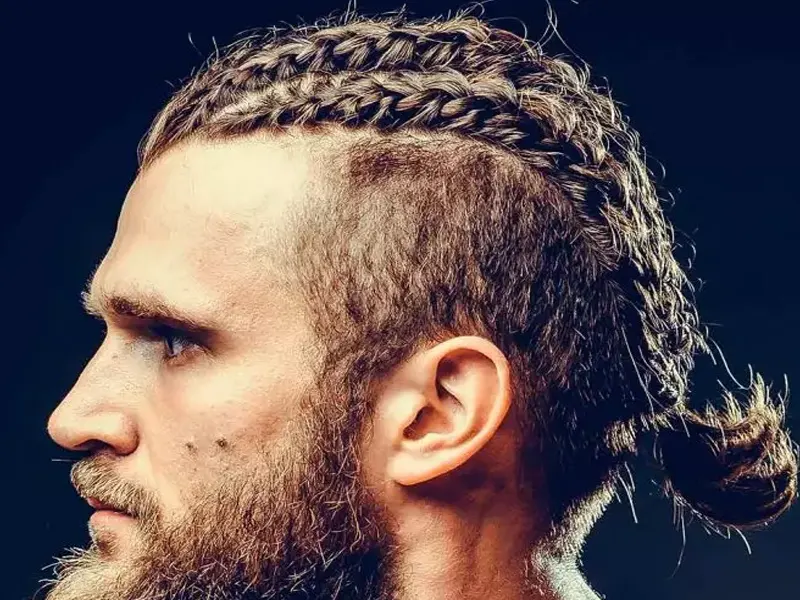
Imagine a Nordic landscape, fierce warriors setting sail under a brooding sky. Amidst the clatter of shields and swords, a distinct style emerged – the Viking braids. Historically accurate or a product of popular culture? Let’s untangle this mystery.
- Historical Records: Archeological finds suggest that Vikings did wear their hair long, often complemented with braids1.
- Purpose Over Pomp: Vikings led challenging lives, and braiding their hair ensured it stayed out of their way during battles and daily chores.
2. The Symbolism Tangled Within
Viking braids weren’t just about aesthetics; they had a deeper meaning. Can you guess what these might signify?
- Status and Honor: Just as trees have rings that tell their age, the complexity of Viking braids often revealed one’s stature and achievements.
- Protection: Some believed braids acted as talismans, protecting warriors from harm.
- Gender Norms: Both men and women wore braids, although the styles varied.
3. From Battlefields to Beauty Salons: The Modern Take
While Viking braids have ancient roots, their appeal hasn’t waned. Today, they’ve morphed from the rugged styles of yore to polished, intricate designs. Here’s a glimpse of their modern renditions:
- TV & Cinema: Shows like “Vikings” have brought these braids back into the limelight.
- Fashion Runways: Models sashaying down with Viking-inspired hairdos are no longer a rare sight.
- Everyday Styles: People across the globe, irrespective of their cultural background, are experimenting with Viking braids for casual and formal events.
Historical Viking Hairstyles
Viking hairstyles have become symbolic of strength, courage, and adventure. Today’s pop culture, particularly with shows like “Vikings”, has ignited an interest in Norse culture and its hairstyles. But what did Viking hairstyles truly look like, and what significance did they hold?
Long and Loose
- Description: Many Viking men and women had long hair as a common feature of their appearance. For men, it symbolized strength and virility, while for women, long hair was a sign of beauty and fertility.
- Historical Context: Long hair could be seen as a status symbol. Maintaining long hair required care, suggesting that those who had it were prosperous and had the means to take care of it.
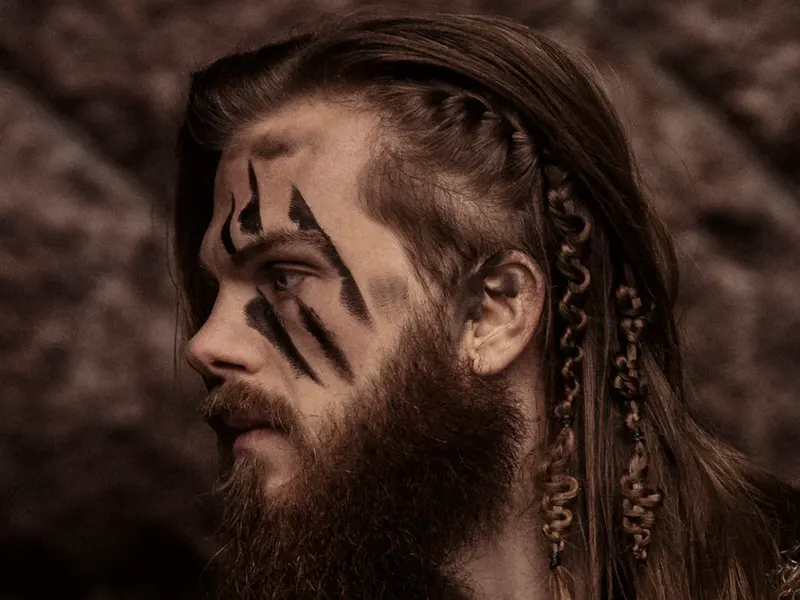
Braided Styles
- Description:Braids have been popular across genders, continents, and centuries.
They ranged from simple, single braids to multiple, complex designs.
- Historical Context: Braiding, especially for women, was a daily routine, serving both practical and aesthetic purposes. In battle or daily work, braids kept hair out of the face. Some historians believe that certain braid styles might have had ceremonial or familial significance.
The Shaved Temples
- Description: A prominent style among Viking warriors was long hair at the back and shaved temples. Some variations also had the centre of the head braided or tied into a ponytail.
- Historical Context: This style could potentially have two-fold importance. One, it provided a practical advantage in battle, preventing enemies from grabbing the warrior’s hair.
The Beard
- Description: Beards were a prominent feature among Viking men. They varied from long and flowing to intricately braided designs.
- Historical Context: A beard was a sign of masculinity, maturity, and wisdom. It was also practical, providing warmth in the cold Nordic climates.
Knots and Buns
- Description: Hair tied up in knots or buns, either at the back or top of the head, was another typical style, especially among male warriors.
- Historical Context: Knots and buns, much like braids, were functional, keeping hair out of the face. They might also signify a warrior’s readiness for battle.
Hair Accessories
- Description: As discussed in previous sections, Viking hairstyles were often adorned with accessories like beads, rings, or brooches.
- Historical Context: These accessories were not just decorative. They indicated wealth, and status, and could even have spiritual significance.
4. DIY: Creating Your Own Viking Braid Masterpiece
Braiding, like any art, requires patience and practice. Ready to set sail on this hair adventure?
- Prep Your Mane: Ensure your hair is clean and tangle-free.
- Choose a Style: From the classic three-strand to the intricate fishtail, pick what resonates with you.
- Section & Start: Divide your hair and start weaving, ensuring it’s snug but not too tight.
- Seal the Deal: Secure with a hairband. For added authenticity, use leather strips or metallic beads.
Remember, it’s not about perfection, but the journey and the story your braids tell.
4.1. The Importance of the Right Tools
It’s said that a craftsman is only as good as his tools. And this is no less true when you’re crafting Viking braids.
- Wide-toothed Comb: To detangle without causing breakage.
- Rat-tailed Comb: For precision while sectioning hair.
- Elastic Bands: To secure the ends of your braids. Clear ones are great as they blend seamlessly.
- Braid Spritz or Wax: This helps in taming flyaways and ensuring the braid stays neat longer.
Is it essential to have all these tools? Not strictly. But having them handy can make the braiding process smoother and the end result more polished.
4.2. Techniques to Nail the Viking Look
While the basic braid forms the foundation, there are certain techniques that lend your braids that distinct Viking look.
- Undone Ends: Instead of braiding all the way down, leaving a portion of the ends undone gives a rugged, authentic feel.
- Incorporate Beads: Vikings often used beads in their hair. Slide a few metal or wooden beads onto strands for that added touch.
- Multiple Layers: Multiple small braids can be interwoven into a larger one, giving a rich texture and depth to the style.
- Loose vs Tight: While it might seem contradictory, combining areas of tightly braided hair with sections that are a bit looser can create a visually appealing contrast.
Have you ever wondered why Vikings chose such intricate hairstyles? Was it merely for style, or did it represent something deeper, perhaps a mix of both?
Viking Hair Beads and Their Significance
Throughout history, the Vikings have left a mark with their exploration, their culture, and their distinctive styles. Among the unique accessories that catch the eye in depictions of Vikings are the hair beads. But were they merely a fashion statement? Or did they signify something more? Let’s delve deeper into the world of Viking hair beads.
A Symbol of Wealth and Status
Much like jewelry in other ancient cultures, the intricacy and material of Viking hair beads often indicated the wealth and status of the wearer. High-quality metals or precious stones were typically reserved for those of higher status. Isn’t it fascinating to think that just like the rings and necklaces of today, hair beads served as a tangible display of wealth and prestige?
Spiritual and Protective Talismans
Viking culture was deeply rooted in its spiritual beliefs. Hair beads often carried runic inscriptions or symbols of the Norse gods. These were believed to offer protection, especially in battle. Can you imagine a Viking warrior, adorned with beads inscribed with runes, believing in their power to protect him during a raid?
Marking Important Life Events
Life’s milestones were significant in Viking culture. The addition of a new bead might mark a rite of passage, a victorious battle, or even the birth of a child. As Vikings aged, their hair would gradually tell a story adorned with beads, each representing a memory or achievement.
Functional Uses
Apart from the aesthetic and symbolic reasons, the beads had practical utility. They helped in managing long hair, keeping it away from the face during battle or work. Just like a hair tie or clip serves us today, can you picture a Viking using a bead to tie up his hair while forging a sword?
Expression of Personal Identity
Every individual bead design or placement could have been a way to express individuality. This allowed Vikings to showcase their personal journeys, beliefs, and preferences. Who knew hair accessories could serve as an expression of self in such profound ways?
Age and Wisdom
- Description: Different braiding styles or the incorporation of grey and white hair into braids symbolized life’s progression and the wisdom that comes with age.
- Reasoning: As with many cultures, age was equated with experience and knowledge in the Norse communities. Sporting one’s age through braids was a way of wearing one’s life story.
Warrior’s Readiness
- Description: Some Viking warriors braided their hair and beards in specific ways when they prepared for battles.
- Reasoning: A warrior’s braid could serve a dual purpose – showing they are battle-ready and keeping their hair tidy during combat, preventing it from being a hindrance.
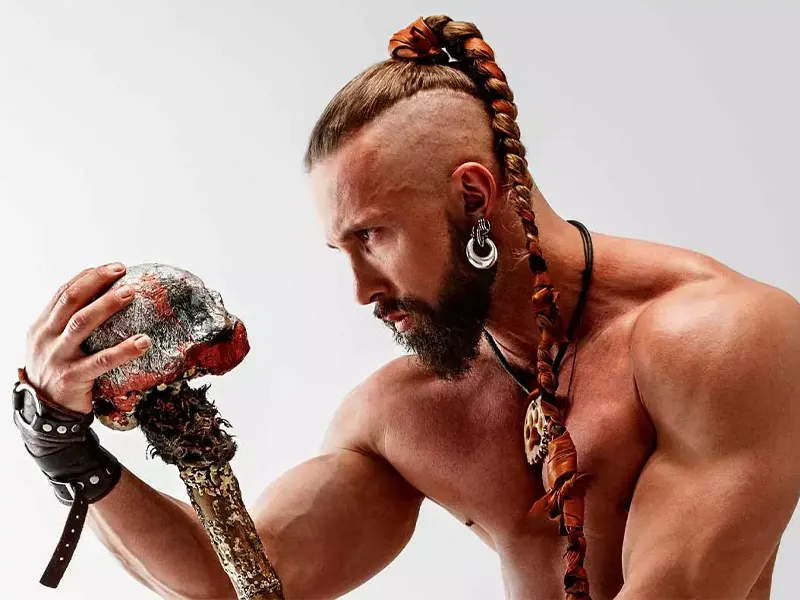
Familial and Tribal Ties
- Description: Specific braid patterns could signify one’s lineage or clan. A visual representation of a family’s composition, structure, and relationships.
- Reasoning: In a society where family and clan ties were crucial, showcasing one’s lineage through hair could fortify bonds and ensure loyalty.
Life Events and Transitions
- Description: Vikings might have adopted certain braiding styles or added accessories to their braids during significant life events like weddings, childbirth, or funerals.
- Reasoning: Just as modern societies have specific attire or rituals for significant events, Vikings might have used braids as a form of expression during these pivotal moments.
Nordic Braids: A Glimpse into the Beauty and Heritage of the North
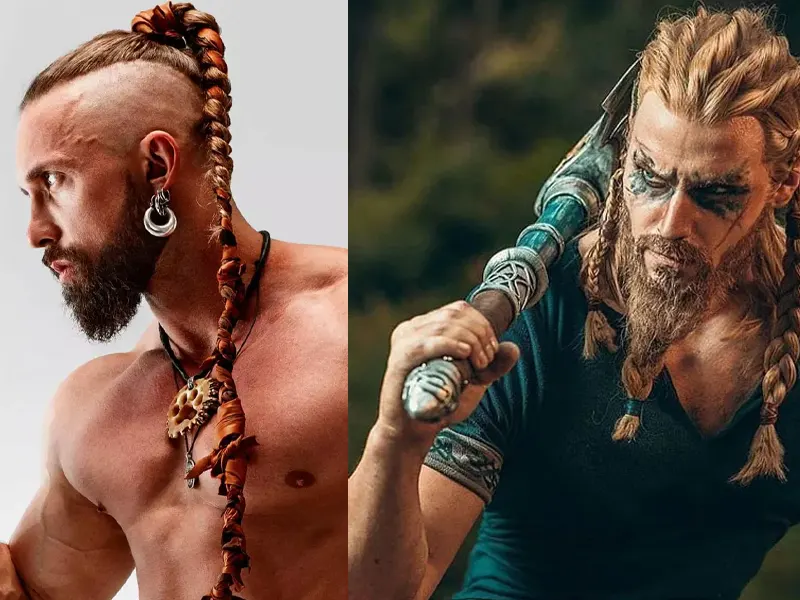
When we think of the Nordic regions, we’re often whisked away by thoughts of snow-capped mountains, the ethereal glow of the Northern Lights, and the myths and legends of Viking warriors. But beyond these natural wonders and legendary tales, there’s a beautiful tradition of braiding that’s deeply rooted in the Nordic culture: the Nordic braid.
What is a Nordic Braid?
The term ‘Nordic braid’ generally refers to a style of braiding that originates from the Northern European countries, particularly those of the Scandinavian region. However, it’s not limited to a single style. Instead, Nordic braiding encompasses various techniques and designs, each with its unique charm.
The Historical Significance
Braiding in the Nordic regions is ancient, and its origins can be traced back to the Viking Age and even earlier.
- Evidence: Ancient artefacts, such as combs and pins, have been discovered with imprints or designs of braided patterns.
- Functionality: Apart from being a style statement, these braids were often functional. They kept the hair away from the face, useful during harsh winters or hunting expeditions.
Symbolism in the Braids
Much like the Vikings, Nordic braids also carried symbolism.
- Marital Status: In some areas, the way a woman wore her braids could indicate if she was married, single, or widowed.
- Celebrations: For special occasions, like Midsummer, braids would be adorned with fresh flowers or ribbons.
Modern-Day Resurgence
With the rising popularity of TV shows like ‘Vikings’ and movies that portray ancient Scandinavian life, Nordic braids have seen a resurgence in global fashion.
- Fashion Runways: Modern interpretations of the Nordic braid have been spotted on fashion runways, with models donning intricate versions of the style.
- Music Festivals: They’re also a hit at music festivals where attendees merge the ancient with the contemporary, adding beads, wires, and more.
How to Create a Basic Nordic Braid
For those intrigued, here’s a simple step-by-step guide to creating your very own Nordic braid:
- Section the Hair: Begin by sectioning your hair into three equal parts.
- Start Braiding: Take the rightmost section and cross it over the middle, followed by the leftmost section crossing over the new middle.
- Continue and Secure: Continue this pattern until you reach the end and then secure the braid with a hair tie.
- Accessorize (Optional): For that traditional Nordic touch, weave in some thin ribbons or add floral accessories.
Norse Braids: An Intricate Blend of Culture, History, and Style
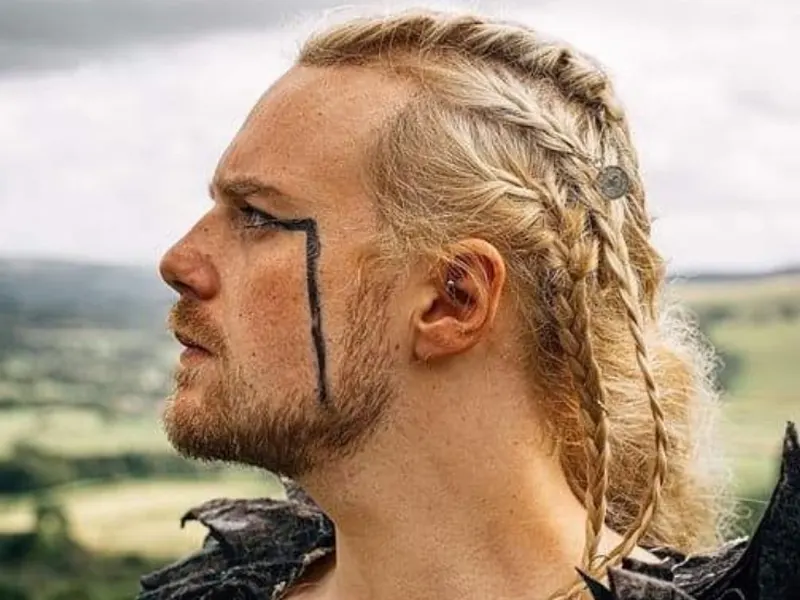
In the annals of hair fashion, few styles evoke as much intrigue and admiration as Norse braids. Steeped in rich Viking history and the sagas of ancient Scandinavia, these braids provide a unique window into a bygone era while retaining their relevance in today’s fashion world.
Delving into the Roots
The Norse, or the people of ancient Scandinavia (present-day Norway, Sweden, and Denmark), have always had a fascination with intricate hairstyles, among which braids were prominently featured.
- Historical Insight: Early depictions in artefacts and some mentions in sagas hint towards the Vikings’ inclination to take pride in their hair, with braids playing a significant role.
Symbolism Behind Norse Braids
Braids were not just about fashion in Norse culture. They held a deeper significance.
- Marks of Honor: Warriors often sported braids as marks of honor and distinction in battles.
- Sign of Status: The complexity of a braid often denoted one’s status or rank within the community.
- Spiritual Significance: Some believed that braids held spiritual power, protecting the wearer from harm.
Common Norse Braid Styles
- The Crown Braid: This style, where the braid circles the crown of the head, was popular among Norse women.
- Warrior Braids: Typically sported by men, these were tighter and often accompanied by shaved sides.
- Long, Flowing Braids: These were common among both genders, sometimes even Closely connected with beads and jewellery.
Norse Braids in Popular Culture
Modern media, with its penchant for period dramas, has brought Norse braids back into the limelight.
- Television: Series like “Vikings” and “The Last Kingdom” showcase characters with intricately styled Norse braids, sparking a renewed interest in the style.
- Fashion World: Designers have been inspired to incorporate Norse braids in their looks, especially in shows highlighting bohemian or rustic themes.
Getting the Norse Braid Look Today
Want to sport a Norse braid? Here’s a basic guide:
- Preparation: Start with clean, detangled hair.
- Sectioning: Divide your hair into desired sections, depending on the braid style.
- Braiding: Begin intertwining the sections, keeping the braid tight and uniform.
- Final Touch: Secure the end with a band. For added authenticity, consider weaving in a few beads or metal rings.
5. Care Tips for Your Braided Crown
Keeping your Viking braids in shipshape condition is vital. Here’s how:
- Stay Gentle: When undoing your braids, be gentle to avoid breakage.
- Moisturize: Ensure your hair remains hydrated. A leave-in conditioner works wonders.
- Night-time Care: A silk pillowcase or headscarf can prevent frizz and tangles.
Conclusion:
From the fierce shores of Scandinavia to contemporary fashion stages worldwide, Viking braids have journeyed across time and cultures. They are not just a hairstyle but a rich tapestry of history, symbolism, and artistry. As the saying goes, “Old is gold,” and Viking braids are a golden strand in the world of hairstyles. Ready to braid your story?
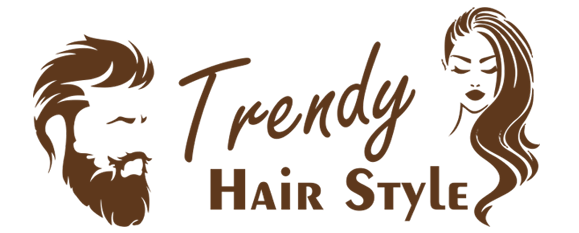
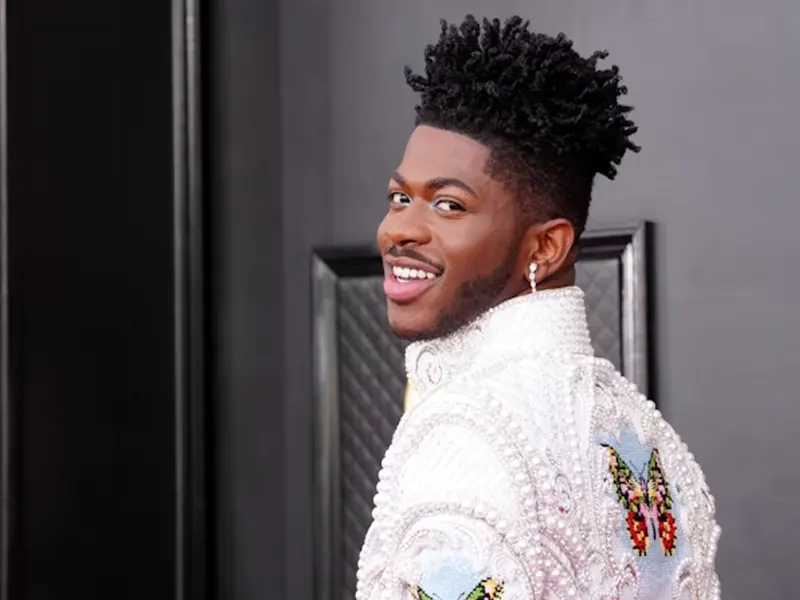 Jay Z’s Hair: More than Just a Style Statement
Jay Z’s Hair: More than Just a Style Statement 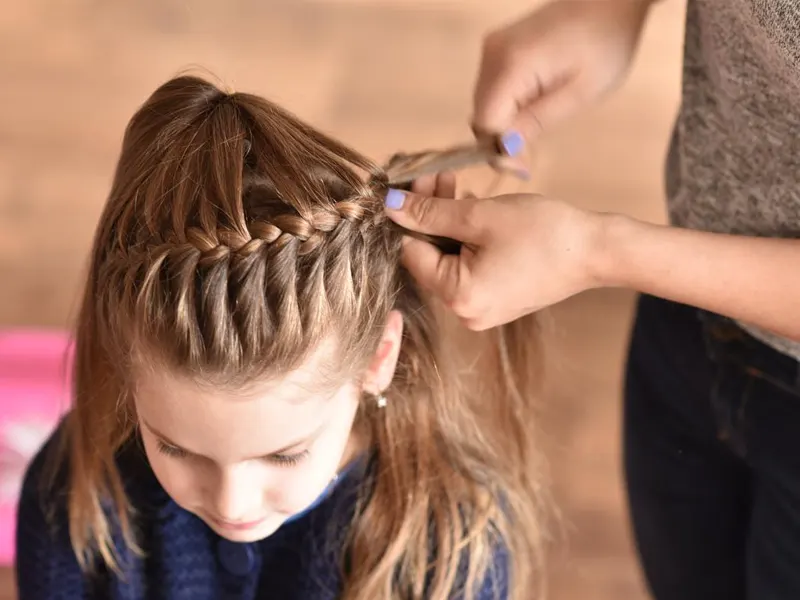 Braid Hairstyles for Kids: Cute, Comfortable, and Creative
Braid Hairstyles for Kids: Cute, Comfortable, and Creative 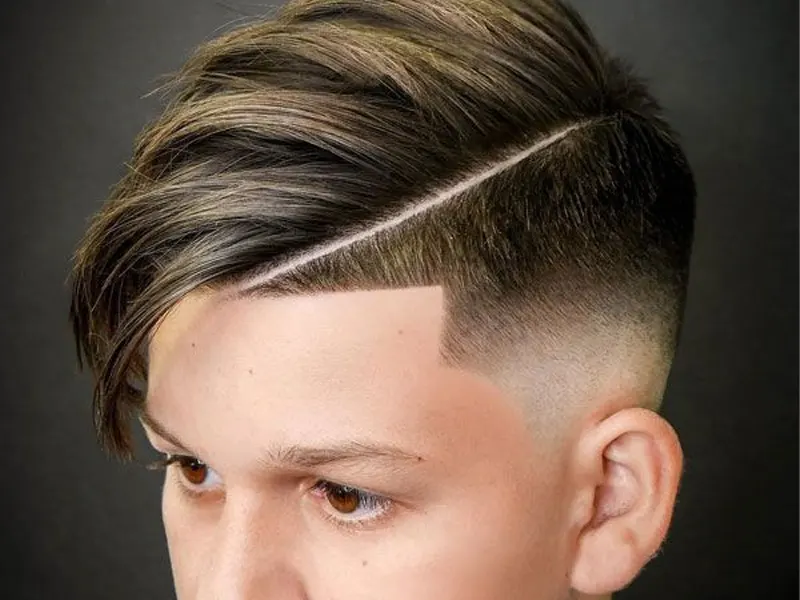 “The Nuanced World of Tapers and Fades: An In-Depth Examination”
“The Nuanced World of Tapers and Fades: An In-Depth Examination” 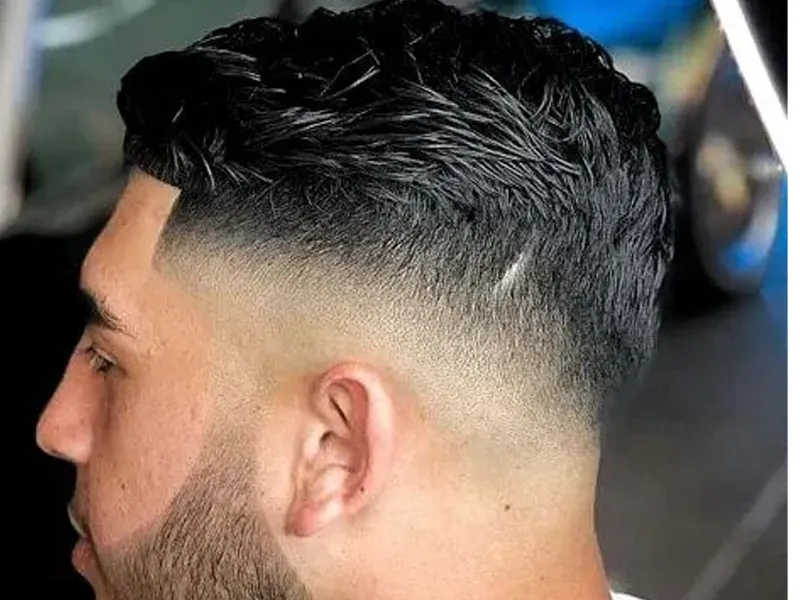 “The Drop Fade Chronicles: Modernity Meets Mastery”
“The Drop Fade Chronicles: Modernity Meets Mastery” 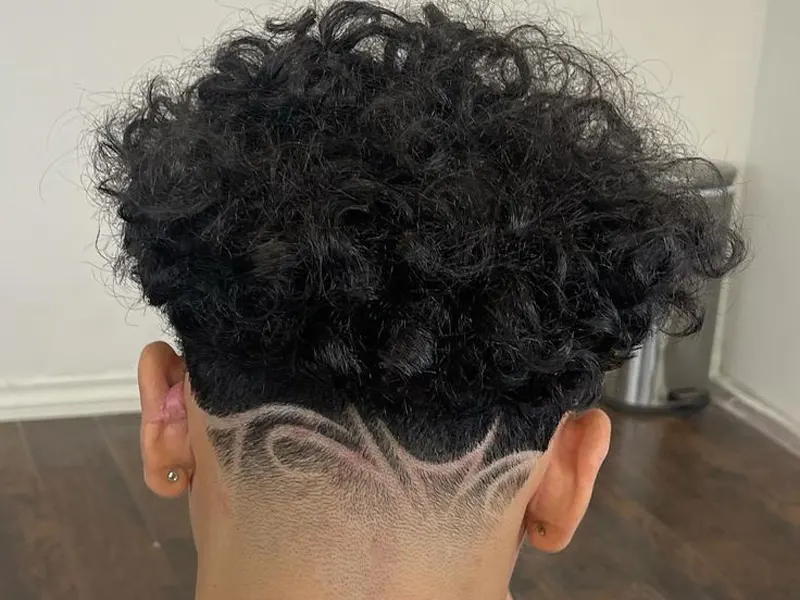 “Elevating Elegance: A Deep Dive into the Nuances of the Low Taper and Beyond”
“Elevating Elegance: A Deep Dive into the Nuances of the Low Taper and Beyond” 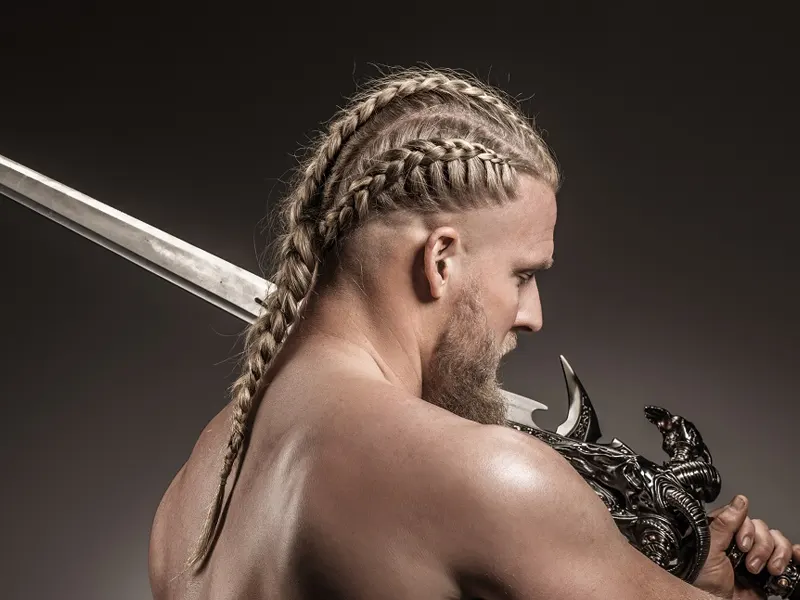
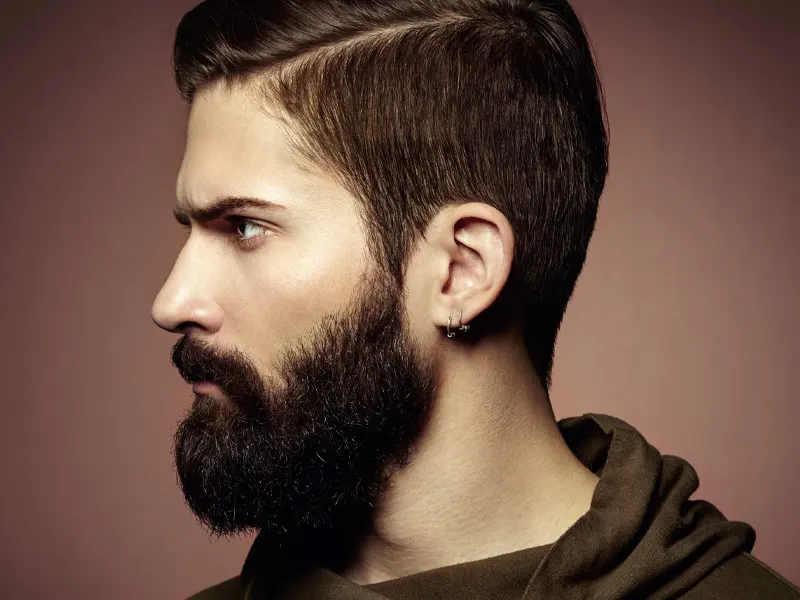 The Neck Beard: Understanding and Styling the Controversial Facial Hair
The Neck Beard: Understanding and Styling the Controversial Facial Hair 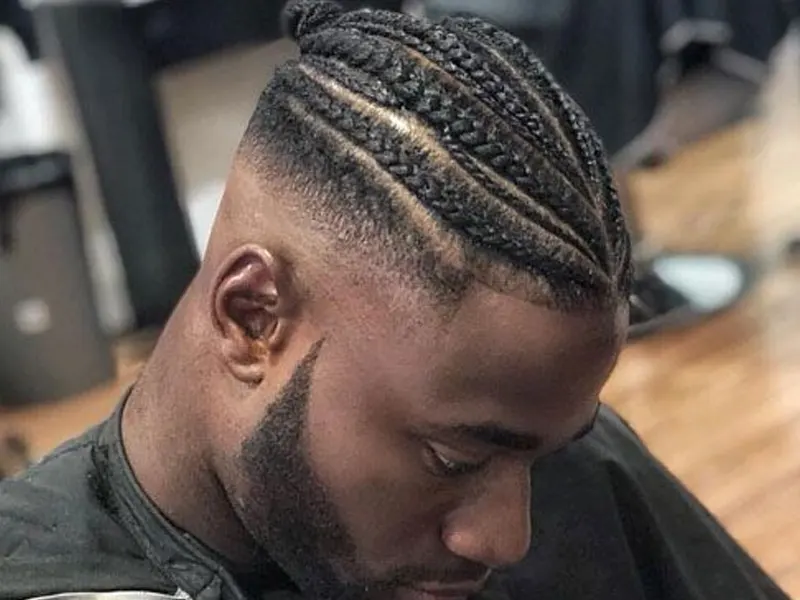 Black Man Braids with Fade: The Perfect Fusion of Heritage and Style
Black Man Braids with Fade: The Perfect Fusion of Heritage and Style 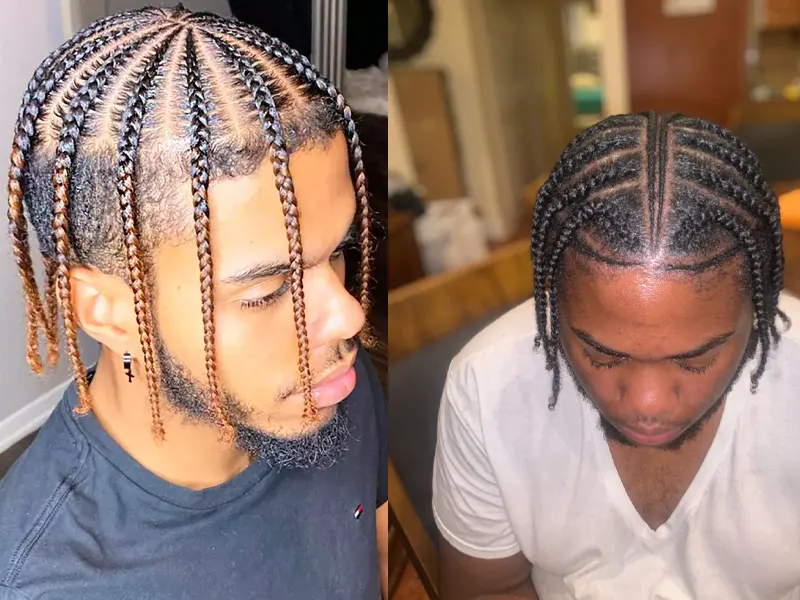 Pop Smoke Braids: An Emblem of Artistry and Legacy
Pop Smoke Braids: An Emblem of Artistry and Legacy 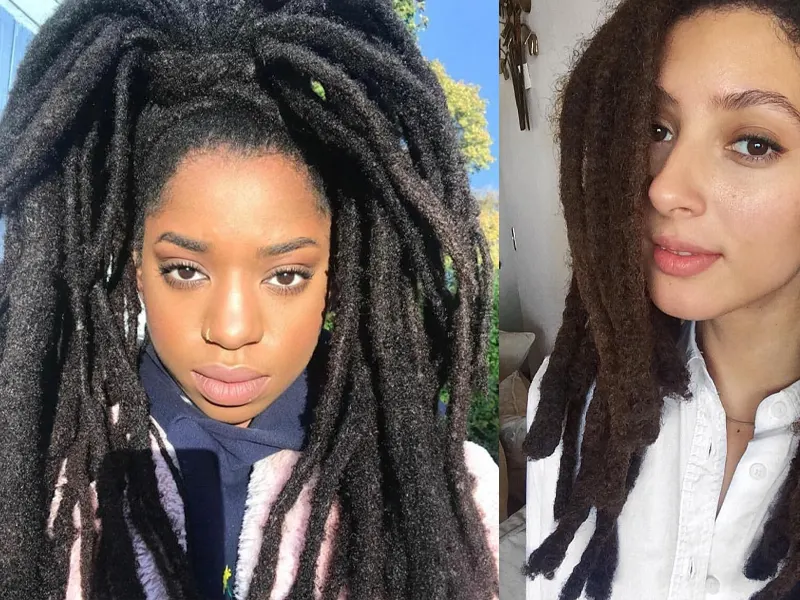 Freeform Dreads: The Natural Journey of Hair
Freeform Dreads: The Natural Journey of Hair 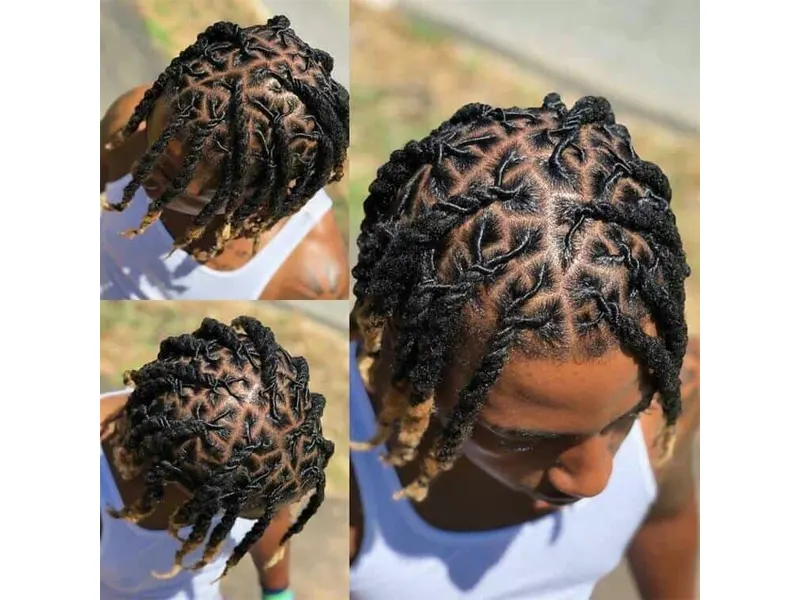 Can Your 2 Strand Twists Transform into Locs?
Can Your 2 Strand Twists Transform into Locs?